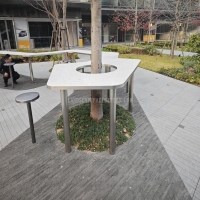Welcome to the website for landscape facilities products and knowledge.
What are the most common challenges in recycling or disposing of the table at end-of-life?
The journey of a table doesn't necessarily end when it reaches the final stage of its lifecycle, yet the path toward responsible disposal presents numerous complex challenges that both consumers and waste management facilities must confront. One primary obstacle lies in material heterogeneity - modern tables often combine wood, metal, plastics, and glass in single units, creating significant separation difficulties that complicate recycling processes. The presence of composite materials and chemical treatments further exacerbates this issue, as these integrated components resist straightforward disassembly and contaminate recycling streams.
Transportation and logistical constraints represent another significant barrier to effective table disposal. Bulky dimensions and substantial weight make tables expensive to transport to specialized recycling facilities, while many municipal waste collection services lack the capacity to handle large furniture items efficiently. This logistical challenge often leads to improper disposal methods, including illegal dumping that contributes to environmental degradation and landfill overcrowding.
Chemical treatments and finishing products applied during manufacturing create additional complications for end-of-life table management. Varnishes, paints, fire retardants, and protective coatings may contain hazardous substances that require special handling procedures, increasing both the cost and complexity of environmentally responsible disposal. These chemical components can render otherwise recyclable materials unsuitable for standard processing methods, forcing them into waste streams where their potential value remains untapped.
The economic viability of table recycling presents yet another substantial challenge. The labor-intensive process of disassembling mixed-material furniture often exceeds the market value of recovered materials, creating financial disincentives for recycling operations. This economic reality particularly affects lower-value materials like particleboard and MDF, which comprise a significant portion of budget-friendly furniture but offer minimal recovery value despite their environmental impact.
Consumer awareness and behavioral patterns significantly influence table disposal outcomes. Many table owners remain unaware of proper disposal channels or local recycling options, while the convenience of curbside disposal often overrides environmental considerations. The absence of standardized labeling identifying material composition further complicates responsible decision-making at the disposal stage, leaving consumers guessing about the most appropriate end-of-life pathway for their furniture.
Despite these multifaceted challenges, innovative solutions are emerging across the furniture industry. Design for disassembly principles, take-back programs from manufacturers, and specialized furniture recycling facilities are gradually transforming how we approach table end-of-life management. As circular economy concepts gain traction, both producers and consumers are recognizing that addressing these disposal challenges requires collaborative effort and shared responsibility throughout the entire furniture lifecycle.
Related search:

Recommendation
An outdoor bar counter with stainless steel and terrazzo materials in an irregular shape